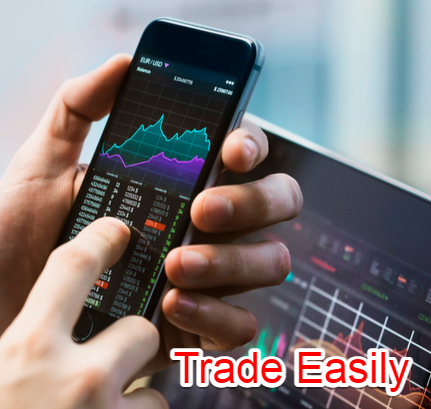In the realm of finance, accurate and timely financial reporting is crucial for businesses to make informed decisions, assess their performance, and stay competitive. Among the key financial statements, the trading profit and loss account (P&L) holds a significant place in providing insights into a company’s profitability and overall financial health. Preparing clear and informative P&L videos can greatly enhance the accessibility and understanding of this essential financial data for both internal and external stakeholders.
Format Of Preparing Trading Profit And Loss Account Videos
Essentials of Trading Profit and Loss Account Videos
A trading P&L video is a visual presentation that summarizes the revenues, expenses, and profits or losses incurred by a business from its trading activities. It provides a comprehensive snapshot of the company’s financial performance over a specific period, typically a quarter or a year. Creating effective P&L videos requires a deep understanding of the underlying concepts and a structured approach.
Key Components of a P&L Video
- Revenue: This includes all sales generated from the company’s primary business activities. It is broken down into various categories, such as sales of goods, services, and interest income.
- Cost of goods sold (COGS): This represents the direct costs incurred in producing or acquiring the goods sold.
- Gross profit: Calculated by subtracting COGS from revenue, gross profit measures the company’s profit margin from its core operations.
- Operating expenses: These are the ongoing expenses related to the company’s business operations, including salaries, rent, utilities, and marketing.
- Other income and expenses: This category includes non-operating items, such as gains or losses from investments or foreign exchange fluctuations.
- Net income or loss: This is the final figure that represents the company’s overall profitability after deducting all expenses from revenue.
Crafting a Compelling P&L Video
To create impactful P&L videos that effectively convey the underlying data, it is essential to adopt a structured approach. Here are some key steps to follow:
1. Gather Accurate Data
The accuracy of your P&L video hinges on the quality of the underlying data. Ensure that you have access to up-to-date financial information and that all transactions are properly recorded and categorized.
2. Define a Clear Structure
Organize your video logically, starting with a concise introduction that provides context and purpose. Divide the video into distinct sections, such as revenue, expenses, and profitability, and use transitions to guide viewers seamlessly through the presentation.
3. Visualize the Data
Harness the power of visuals to make your P&L video visually appealing and easy to understand. Use graphs, charts, and tables to present the data in a clear and engaging manner. Color-coding and annotations can also enhance readability and comprehension.
4. Provide Context and Insights
Go beyond presenting the numbers by offering context and insights. Explain any notable trends, variances from previous periods, or key factors driving the company’s financial performance. This analysis will add depth to your presentation and help viewers better grasp the implications of the data.
5. Optimize for Clarity and Accessibility
Ensure that your video is accessible to a wide audience, including those with limited financial knowledge. Use clear and concise language, and avoid technical jargon as much as possible. Provide closed captions or transcripts for enhanced accessibility.
Expert Tips for Effective P&L Videos
In addition to adhering to the core principles outlined above, incorporating expert tips can further enhance the effectiveness of your P&L videos. Here are some valuable suggestions:
1. Use Real-Time Data
Provide viewers with the most current financial information by using real-time data. This will ensure that your video remains relevant and up-to-date, increasing its credibility.
2. Leverage Interactive Features
Incorporate interactive elements, such as interactive charts or drill-down capabilities, to empower viewers to explore the data further and gain a deeper understanding.
3. Seek Feedback and Iterate
To improve the quality of your P&L videos, seek feedback from colleagues, stakeholders, or a focus group. This feedback will help you identify areas for improvement and refine your approach.
Frequently Asked Questions
To address common questions and provide additional clarity on the topic, here is a brief FAQ section:
- What is the purpose of a trading P&L video?
- Who should create P&L videos?
- What are the key elements that should be included in a P&L video?
- How can I make my P&L videos more engaging?
- What are the benefits of using P&L videos?
A trading P&L video provides a visual representation of a company’s profitability and financial performance over a specific period.
Financial analysts, accountants, or individuals with a good understanding of accounting principles and financial reporting are best suited to create P&L videos.
Revenue, COGS, gross profit, operating expenses, other income and expenses, and net income or loss are crucial elements to include.
Use visually appealing graphics, provide context and insights, and incorporate interactive elements to capture and retain viewers’ attention.
P&L videos enhance accessibility to financial information, provide a comprehensive overview of performance, facilitate stakeholder understanding, and assist in decision-making.
Conclusion
Preparing clear and informative trading P&L account videos is essential for effective financial reporting and communication. By following the principles and expert tips outlined in this article, you can create videos that effectively convey the company’s financial performance, enhance stakeholder understanding, and support informed decision-making. Are you ready to unlock the power of P&L videos and transform your financial reporting strategy?





